
Guests
- Ira Leiferscientist on the government-appointed Flow Rate Technical Group and a researcher in the Marine Science Institute at the University of California, Santa Barbara.
As the BP oil disaster enters its seventy-seventh day, we speak to a scientist leading a team of researchers trying to get access to the well to better study what is happening at the site. Dr. Ira Leifer, who’s on the federally appointed Flow Rate Technical Group, says BP is restricting his access to study the gushing oil well. [includes rush transcript]
Transcript
AMY GOODMAN: It’s day seventy-seven of the BP oil spill, and there is still no clear end in sight for the worst environmental disaster in US history. Up to 130 million gallons of oil have spilled into the Gulf of Mexico, with tens of thousands of barrels continuing to gush out of the Deepwater Horizon well every day. On Monday, tar balls were found on a beach in Texas, the first evidence that the spill has reached all the Gulf states, spanning 500 miles of coastline through Louisiana, Mississippi, Alabama and the Florida Panhandle.
Meanwhile, clean-up efforts are far behind where they should be. In the two-and-a-half months since the disaster, BP has skimmed or burned just 60 percent of the amount of oil it promised regulators it could remove in a single day. That’s right, the Washington Post reports that in March, just a few weeks before the disaster, BP filed a report saying it had the capacity to skim and remove more than 490,000 barrels of oil each day in the event of a major spill. The report was not questioned by federal officials. As of Monday, skimming operations have averaged less than 900 barrels a day.
And as the disaster continues to worsen, new restrictions are being placed on the media. The Coast Guard has announced new rules keeping the public, including photographers and reporters covering the spill, from coming within sixty-five feet of any response vessels or booms on the water or on beaches. Violators could face a fine of up to $40,000 and felony charges. In order to get within the sixty-five-foot limit, media must get direct permission from the Coast Guard captain of the Port of New Orleans.
Well, we’re joined now by a scientist leading a team of researchers trying to get access to the well to better study what’s happening at the site. Congressman Ed Markey wrote a letter to BP last month requesting the corporation provide safe access to the well site and full financial support, but there’s been no response from BP. Dr. Ira Leifer is the scientist leading the proposed research mission, known as “Deep Spill 2.” He’s also on the federally appointed Flow Rate Technical Group. He’s a researcher in the Marine Science Institute at the University of California, Santa Barbara, joining us now on the phone.
Dr. Leifer, Welcome to Democracy Now! Explain what you are requesting and what you are not getting.
DR. IRA LEIFER: Well, Amy, about ten years ago, almost to the day, there was an experiment in frigid Arctic Norwegian waters to try to learn where the oil would go. And because it was a small release, it was artificial. We didn’t learn from that what we need to know now to try to understand where the oil’s going from the Macondo spill. We don’t know. We’re searching in the dark.
Deep Spill 2, this experiment that I proposed and created and brought together a team of scientists to research, is trying to understand — hypothesis-driven science — where the oil goes in the water column, so that we can actually go and respond to it. And in part, it’s for now, to try to know what its effect on the ecosystem is. But a big part of this is for the future and for the next generation, so that in a future oil spill, we actually are not searching blindly for where the oil goes, but we have a good idea, and we can actually respond to it appropriately.
AMY GOODMAN: What has BP said?
DR. IRA LEIFER: It’s been silent. I mean, we put together this experiment. We have literally centuries of field experience from world-class researchers, like Miriam Kastner and Rick Koff and Vern Asper, And we’ve heard nothing from BP, as well as other scientists I know who are doing and trying to do research, find themselves blocked at every turn from actually learning what we need to know so that we can address this spill safely.
AMY GOODMAN: What is your sense of how much oil is flowing out of this well?
DR. IRA LEIFER: I mean, the Flow Rate team is going to come up with its numbers within, I think, later this week, and they’ll be sort of — mine tend towards the top side. But the real problem is not what the amount of oil is flowing out, but where it’s going, what parts of the ecosystem it’s attacking. I mean, it’s like a cancer that is metastasizing the patient. The ecosystem may not be dead yet, but it’s at great risk. And patients sometimes die of pneumonia. In this case, a hurricane could come through. And my big worry is that if we don’t know where the oil is going and where it’s going to be, then this interwoven network and fabric that is the life in the Gulf of Mexico could be taken out. I mean, a for example is, eagles that never get oiled, if their fish disappear, they too will die. And we really need to understand what’s happening. And the science is not being done, because, in my view and that of many of my colleges, BP is blocking it.
AMY GOODMAN: Why do you have to ask BP for permission? Who is in charge here? You’re working for the government. You’re working with them.
DR. IRA LEIFER: As far as I understand, BP is still in charge of access to the well site, and as well as it’s unclear in terms of financing and support for science to understand what happens. BP caused this accident, and so there’s a certain strong sense that they should, in fact, support efforts to try to understand it, to minimize the damage. And instead, they seem to be worrying about their long-term profits and not the long-term health of the environment.
AMY GOODMAN: You’re not getting permission to do this study, but this, it seems to me, is an indictment not only of BP, but of the US government, that allows this to go on. But also, reporters, journalists, photographers, who are attempting to document this, will now be charged with felonies if they come within sixty-five feet of any site, I mean, even to try to photograph an oiled bird?
DR. IRA LEIFER: I don’t really understand that. It makes no sense to me. Where there’s clear safety issues, of course, there is some issue. But here in Santa Barbara, we have oil, and people work around it and photograph it and so on. I mean, as a scientist, my concern is that if we do science, everyone wins, but if we don’t, we’re actually doing a disservice to humanity. That’s just inexcusable, in that if we don’t do the science and nobody learns from this horrible catastrophe to try to be ready for the future one —- and to myself, that’s inexcusable, so I and my scientific colleagues are trying to do everything we can to make sure that we learn as much about that. And I would include that the free and fair flow of information, reporters having access, is part of the learning process as a society, so that when there are accidents in the future, we actually can respond intelligently and not with a lot of unknown assumptions and just waving our arms and trying to hope we get things right.
AMY GOODMAN: OK. So BP doesn’t want you to study them, but how high up have you gone in the US government -— since you work with the US government — to demand access?
DR. IRA LEIFER: What I’ve done is I’ve put together this experiment, and I’ve shared it with members of the Technical Flow Rate Team and other people within the government, hoping to get the go-ahead on being able to do this experiment. As a scientist, I can only make proposals for what to do and try to share what our efforts are with the public through venues like Democracy Now!
AMY GOODMAN: Dr. Leifer, do you think offshore drilling should end?
DR. IRA LEIFER: In the ideal world, I would tend in that direction, but my worry is that we import our oil, and if we stop producing it within the US, more of it will come from Nigeria, where no one cleans up any mess or accidents, and activists get shot. So what I don’t support is passing on our inability to effectively regulate safely offshore exploration on to the developing world, which just doesn’t have the resources, the legal structure, to deal with it. I think what we need to do is look towards places like northern Europe, Norway, where they have a much more successful effort of controlling and making sure industry explores and exploits oil safely, and look in that direction. But — and the bottom line is, I think, we use the oil, and we need to make sure that we produce all of our oil safely and not pass it on to the developing world.
AMY GOODMAN: I wanted ask you about this report that has just come out, the cleanup efforts far behind where they should be. BP skimmed or burned just 60 percent of the amount of oil it promised regulators it could remove in a single day. Again, the Washington Postreporting that in March, just a few weeks before the disaster, BP filed a report saying it had the capacity to skim and remove more than 490,000 barrels of oil each day in the event of a major spill. The report was not questioned by federal officials. As of Monday, skimming operations have averaged less than 900 barrels a day.
DR. IRA LEIFER: What I think we see here is clear evidence of how the investment in safety has not been made over the last decade. The state-of-the-art skimming vessels are not available. They’re insufficient. There has not been a continuous upgrade of capabilities to retrieve oil. And so, what the report is highlighting is wishful thinking rather than long-term investment strategies. Again, I’ve collaborated with scientists in Norway, where there is much more government support for this kind of research, and there’s a continuous program to ensure that the oil companies have the latest technology available, effective containment systems that can be deployed and so on, in order to respond to an oil spill. And instead, it seems to have been left to industry over the last decade, and industry has maximized their profits and not kept up with investing in case of an accident.
AMY GOODMAN: President Clinton and others have talked about bombing the well. What do you think of this, Dr. Leifer?
DR. IRA LEIFER: I think under certain circumstances, in certain cases, this might be a good idea, but in this particular case, we don’t know. The science has not been done, and I’m very worried, very concerned, almost frightened, you might say, that such a plan, bombing the well, would fracture the seabed and allow what is an engineering problem — oil coming from a single point — to convert into a natural system where the oil comes through thousands and millions of pathways right through the seabed into the ocean. In that case, the billions of barrels in this reservoir would vent, and nothing would stop them, into the ocean. It could vent like it’s doing for decades. And instead of beaches, we’d have pavement. And I think the risk is extremely high. And the only way to know if it makes any sense is actually to do the science, to understand what’s happening, and that science has clearly not been done. And so, therefore, I couldn’t recommend, in any conscience, that that would be a good approach.
AMY GOODMAN: I want to thank you for being with us, Dr. Ira Leifer, scientist on the government-appointed Flow Rate Technical Group and researcher in the Marine Science Institute at the University of California, Santa Barbara. We will link to their letter asking BP to be able to study the well site.

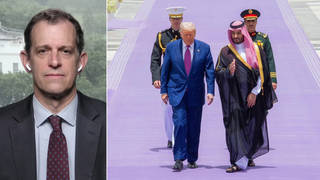
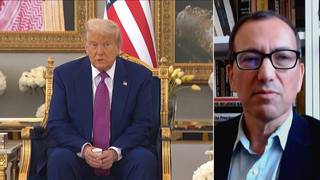
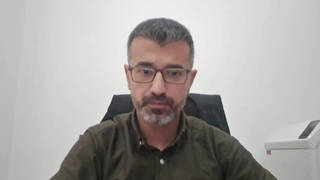
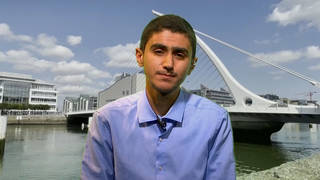
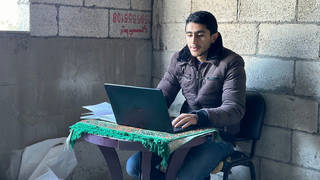
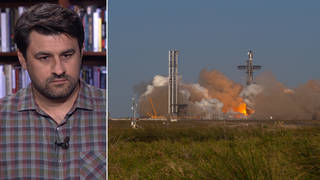
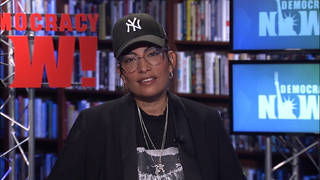
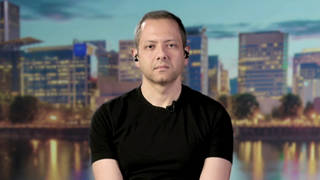

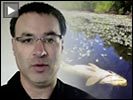

Media Options